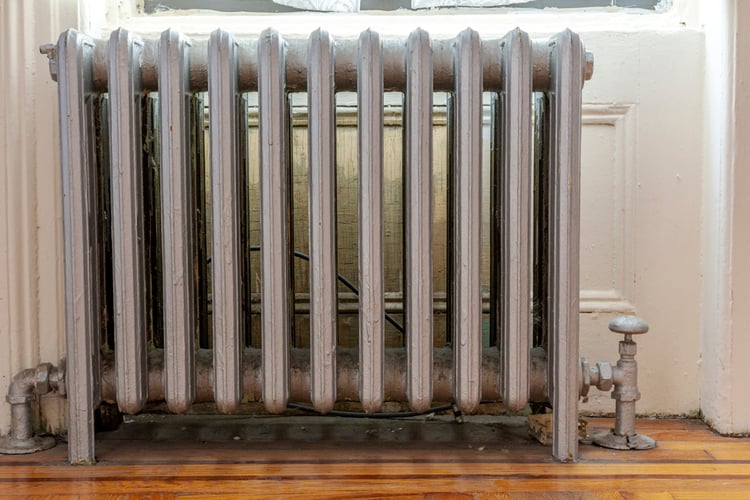Steam heating systems are common in New York City, especially in pre-war apartments and other older buildings. However, steam boilers and radiators tend to be inefficient due to their age and design, and converting to hot water can generate considerable energy savings. As well as being more efficient, hot water systems also offer a faster response time than steam radiators, whilst also reducing maintenance costs and providing safer operation.
When upgrading a building's heating system from steam to hot water, there are two possible approaches:
- Adaptation of the existing installation to use hot water. This is the most cost-effective option when the building will not undergo major renovations in the short term. However, part of the efficiency of a hot water installation is lost when using equipment originally sized and specified for steam.
- Complete replacement of the heating system. This option is prohibitively expensive in existing buildings as it involves opening walls and floors to replace pipes and associated fittings. However, it is cost-effective when a building is going to undergo a major renovation.
Steam heating systems are recommended in new construction where steam is needed for additional purposes beyond heating, such as sterilization; or when residual steam is available from an industrial process or power plant. However, hot water is generally the best option for most other installations.
Make sure your heating system conversion project is professionally designed.
How Steam Heating Was Designed in the 20th Century
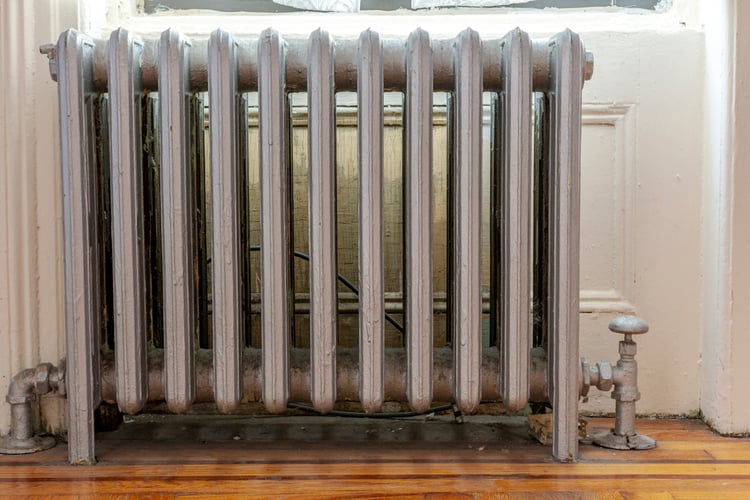
The inefficiency of steam heating largely stems from design practices that were common in the early 20th century: health regulations required that heating systems be sized for buildings with open windows, even during the coldest days of winter. . Therefore, steam radiators tend to overheat internal spaces and opening windows is the only way to regulate the temperature. This practice represents a significant waste of energy, as part of the heating production is dumped outside.
Wasted operation is not the only disadvantage of conventional steam systems found in New York City buildings. They also suffer from the following limitations:
- Steam pipes are generally larger than hot water pipes, which means the system takes up more space. In new constructions, the initial cost is increased.
- Steam heating systems are less forgiving when it comes to failures and leaks. A hot water leak is relatively easy to detect and fix, but steam leaks often involve high-temperature jets that can cause serious burns. Consider that the chances of a failure increase as the system ages, so steam heating systems in pre-war buildings require more attention.
Steam was used in older heating systems for the simple reason that it rises up the pipe without the need for a pump, and a single pipe can supply steam and recover condensed water from a radiator. However, the additional cost of running a steam boiler far outweighs the pumping cost associated with a modern hot water system. Steam heating also has a very slow response time, limiting the use of automatic controls.
Looking for a plumbing design engineer for your construction?
Efficiency advantages of hot water over steam
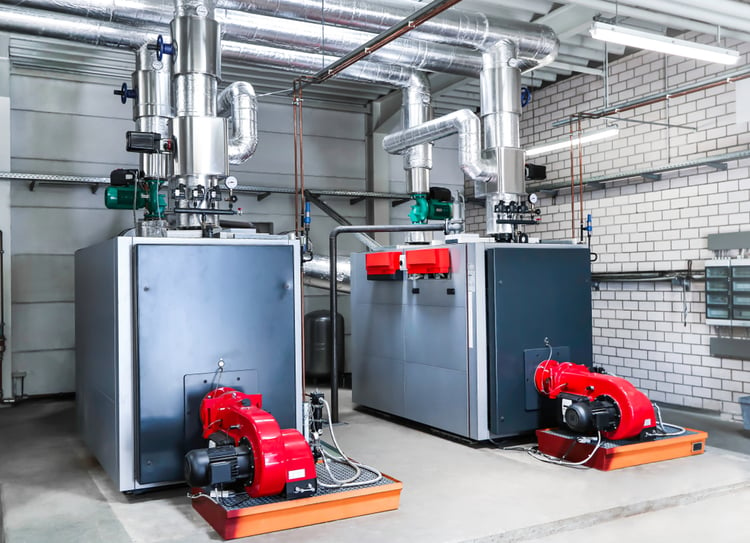
The main reason to upgrade a heating system from steam to hot water is energy efficiency: for example, a University of British Columbia heating system conversion project achieved an efficiency increase from 60 to 85 percent. Steam-based systems also have higher maintenance costs, which can be 10 times higher than an equivalent hot water system.
Hot water systems also offer greater efficiency because they have faster response times and are easier to control. Variables such as water temperature and flow can be controlled with a precision that is simply not possible with steam, optimizing energy consumption and reducing energy costs.
Heating system conversion procedure
As mentioned previously, steam heating systems are often oversized because they were designed to meet outdated health standards. The first step before switching from steam to hot water is to correctly calculate the heating load.
Calculation of heating load and boiler capacity
Using “rules of thumb” can be tempting because they are simple, but they often result in an oversized heating system, partially defeating the purpose of the upgrade. In addition to being inefficient, oversized boilers operate in shorter cycles, wearing out their components and reducing their useful life. This increases maintenance expenses and reduces the time between boiler replacements. The boiler is almost always downsized when a steam to hot water conversion is performed, and it is highly recommended to contact a design engineer or qualified company to obtain a suitably sized installation.
Although existing steam boilers can be modified to provide hot water, upgrading the unit is usually a better idea:
- A modern unit with higher efficiency can be specified.
- Reducing unit size provides additional savings beyond those achieved by improving efficiency.
Reusing steam radiators
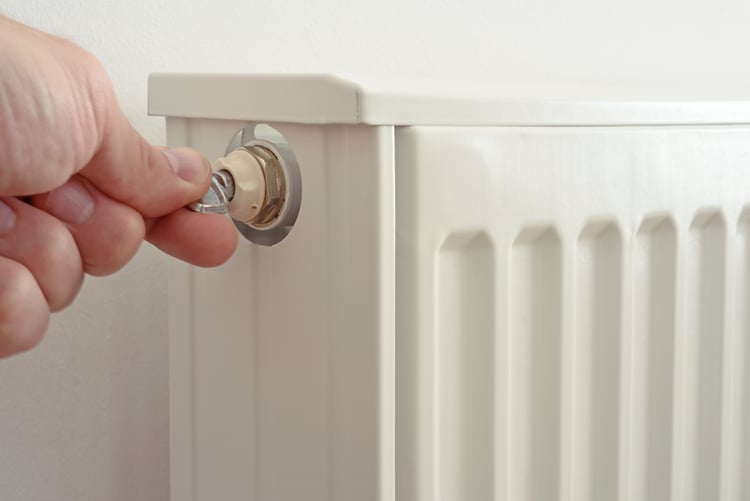
When switching from steam to hot water, it is important to determine whether the radiators can be reused. Some radiators are designed exclusively for steam and modifying them is often expensive and not recommended; In these cases, the best option is to use a different heat distribution medium, such as a fan coil.
Although radiators should be checked by a qualified professional, there is a way to immediately determine if they are steam-only: If the individual radiator sections are not connected with a pipe at the top, hot water cannot be used.
The configuration of the radiator piping is also important when deciding whether to reuse them or not. As the name implies, single-pipe systems deliver steam and recover condensed water through the same pipe; while two-pipe systems have a separate pipe for each function. Two pipes are mandatory for hot water systems, so the upgrade becomes more complex if the existing steam installation only uses one per radiator. Sometimes even two-pipe systems require return pipes to be upgraded; if they are designed for a small flow of condensed water, they may not be able to handle the full flow of a hot water system.
Using steam piping for hot water
Keep in mind that the piping will be subject to a very different set of operating conditions when the installation is upgraded to hot water:
- The steam rises on its own while the hot water is pumped out. The piping must be able to tolerate the water pressure at the pump outlet as well as the static water pressure in the system.
- Both the supply and return lines will carry water. Although the return line is designed for this, the supply line is larger because it is sized to carry steam, and valves are usually needed to balance the flow.
The steam pipe has a series of accessories and fittings that are not necessary when using hot water and only cause wasted energy in the form of a drop in pressure. Any components that are no longer needed after upgrading the hot water system should be removed, and special attention should be paid to thermostatic traps, which can greatly impede the flow of hot water.
Alternative to conversion: complete system replacement
Replacing a steam heating system with a brand new hot water installation is feasible, but can be cost prohibitive in existing installations due to the need to open walls and replace pipes. However, if a building undergoes a major renovation, it represents an excellent change to completely redo the heating system.
- Piping can be sized specifically for hot water, eliminating the need to use valves on oversized lines that were originally designed for steam. Balancing the supply and return of water is much simpler if the piping is sized appropriately.
- Radiators can be replaced with more efficient alternatives such as hydronic floor heating systems or water source heat pumps.
- Automation can be implemented across the entire hot water system, achieving the lowest possible operating cost.
This is only profitable when a major renovation is carried out. For example, demolishing floors and walls just to install new pipes is rarely justified in terms of cost and benefit.
When are Steam systems recommended?
In most residential and commercial environments, hot water is the clear winner over steam in terms of initial cost, convenience and efficiency. However, there are specific applications where a steam-based system is more suitable.
Applications where sterilization is required
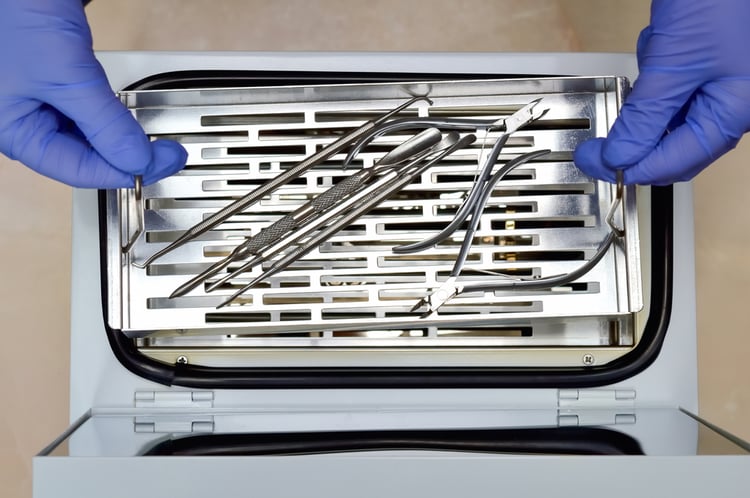
Steam is often used for sterilizing equipment in applications such as healthcare or food processing, and the most economical option is to use the same boiler for both sterilization and heating. Another advantage of steam is that any bacteria in the condensed water are immediately killed during vaporization.
In applications where sterilization is required, using hot water for space heating would require the use of two separate boilers, which has an extremely high initial cost. Hence, steam-based heating is economical.
Availability of residual steam
Steam is often available as waste from industrial and power generation processes and essentially provides a free energy input for heating systems. With an absorption chiller it is also possible to use steam for air conditioning and refrigeration, but it represents a considerable investment that is only justified when free or low-cost steam is available.
Conclusions
Steam is an economical heating medium when it is available as process waste or when it can be used for other applications, but hot water offers greater efficiency, safety and convenience in residential and commercial applications. If you are considering converting a heating system, it is highly recommended that you contact qualified professionals so that you can determine which components of the system can be reused and what modifications will be required. Alternatively, if a major renovation is to be carried out at your premises, consider completely changing the heating system to maximize efficiency.

